Bumps, burns and cuts: how to treat 5 common injuries
Plus, learn when you should see a healthcare provider.
Updated on March 4, 2025
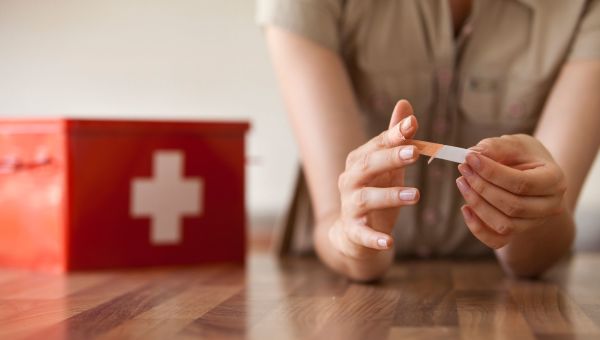
No matter your age, chances are you’ve sustained an injury or two. Some might not have been serious, like scraping your knee. Others may have required medical attention, like a broken bone.
Treatment for these types of injuries relies heavily on a few key elements, including the size, location, and depth of the wound. You may be able to care for minor wounds on your own,… Show More
No matter your age, chances are you’ve sustained an injury or two. Some might not have been serious, like scraping your knee. Others may have required medical attention, like a broken bone.
Treatment for these types of injuries relies heavily on a few key elements, including the size, location, and depth of the wound. You may be able to care for minor wounds on your own, while others might require a healthcare provider (HCP). Here’s what to know about at-home treatment, plus ways to tell if your injury is more serious.
Show Less
Burns
Have you ever accidentally touched an iron or a hot stove and pulled back in pain? If your skin turned red and started swelling, you most likely received a superficial burn, also known as a first-degree burn. While burns penetrating deeper layers of the skin require medical attention, you can treat… Show More
Have you ever accidentally touched an iron or a hot stove and pulled back in pain? If your skin turned red and started swelling, you most likely received a superficial burn, also known as a first-degree burn. While burns penetrating deeper layers of the skin require medical attention, you can treat many first-degree burns at home; they should heal in three to six days.
The first thing you should do is get rid of whatever agent is causing the burn, whether it’s hot water, chemicals or grease, says surgeon Alex Funicello, MD. Then, cool the area with a cold wet compress or cool tap water; continue for 10 to 15 minutes or until the pain subsides. If you notice blisters forming on the affected area, be careful not to break them.
After you’ve cooled the burn, apply a layer of petroleum jelly or aloe vera. Never put on any lotions or creams, as they can cause a reaction. Then, lightly wrap a sterile, non-stick gauze over the burn, which you should change once daily. Ask an HCP about taking an over-the-counter (OTC) medication for pain relief, like acetaminophen or ibuprofen.
“If the burn is deep, with blistering, excessive pain, or a white eschar (scab or crusting), then the patient should be examined by a burn center immediately,” says Dr. Funicello. Some other reasons to seek medical help:
- Has it been more than five years since the last time you got a tetanus shot? If you’re not sure, or think it has been over five years, talk to your HCP.
- The burn is located over a bony surface, on the face or around or near the genitals—or, the burn is larger than 3 inches.
- Your symptoms change or worsen.
- Your lymph nodes become inflamed, you develop a fever or the burn has pus.
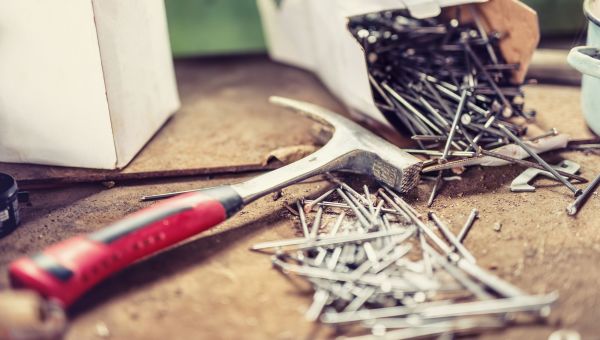
Puncture wounds
Stepping on a nail is an example of a puncture wound. These wounds are different from a cut—they pierce the skin, creating a small hole, rather than tearing it. They tend not to bleed much but may be deep and are prone to infection. If you’re not sure how bad your puncture wound is, go to an HCP.… Show More
Stepping on a nail is an example of a puncture wound. These wounds are different from a cut—they pierce the skin, creating a small hole, rather than tearing it. They tend not to bleed much but may be deep and are prone to infection. If you’re not sure how bad your puncture wound is, go to an HCP. Some minor puncture wounds can be treated at home, however.
First, wash your hands with soap and warm water. If an object caused the puncture wound, check to see if it’s still there. If it can be removed easily, and is accessible, then do so; otherwise go to an emergency room. To stop the bleeding, apply pressure with a cloth. Once the bleeding has lessened, clean the area thoroughly with cool water and soap, and apply a bandage.
Funicello says that if the puncture is located in the head, neck, chest, or abdomen, it should be evaluated. Get help immediately if the tendon, bone, or muscle is exposed, or if you're bleeding heavily and it doesn't stop after applying pressure. While rare, if you start to lose function, you should seek medical help. Punctures to the hands and feet need prompt care, as well, as do wounds caused by nails, fish hooks, or animal bites. This is especially important if the last time you got a tetanus shot was more than five years ago, due to the risk of infection.
Show Less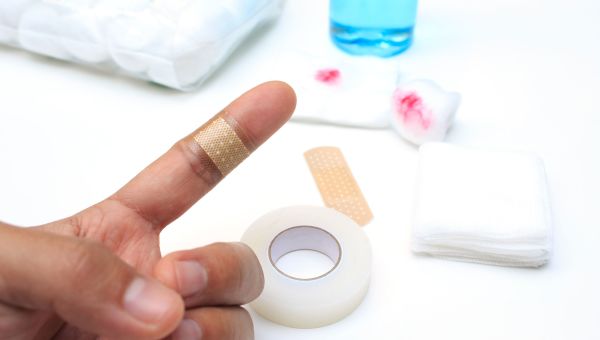
Cuts or lacerations
A cut is a wound typically caused by a sharp object, like a knife or a piece of glass. The term “laceration” can be used interchangeably with the word “cut”; they both imply soft layers of body tissue have been torn.
Deep cuts require medical attention. See an HCP if:
- You have signs of an … Show More
A cut is a wound typically caused by a sharp object, like a knife or a piece of glass. The term “laceration” can be used interchangeably with the word “cut”; they both imply soft layers of body tissue have been torn.
Deep cuts require medical attention. See an HCP if:
- You have signs of an infection including a fever, any redness, swelling, or pus.
- Your pain worsens over time.
- The cut is on your face, close to your eye, or on a bony area of your body. Deep cuts on the hands or feet should be evaluated.
- The wound is wide, deep, or jagged, or if there’s heavy bleeding; if it continues bleeding for 5 to 10 minutes without stopping, even with direct pressure, you should seek help immediately.
- You lose function.
Minor cuts can be treated at home. Be sure to clean the area with soap and water; washing the wound can help remove debris and prevent bacteria from infecting it. If you notice dirt or glass inside the wound, see an HCP. To stop bleeding, apply pressure for at least 20 minutes with a clean cloth or bandage. Then, spread on a thin layer of an antibiotic ointment or gel. Do not use an antiseptic like hydrogen peroxide or alcohol to clean the area because they can burn and might make the cut worse.
Use a gauze or a bandage to keep the area dry and clean, and change it once or twice daily. Even if the cut looks fine initially, continue to monitor the area and check for signs of infection.
Show Less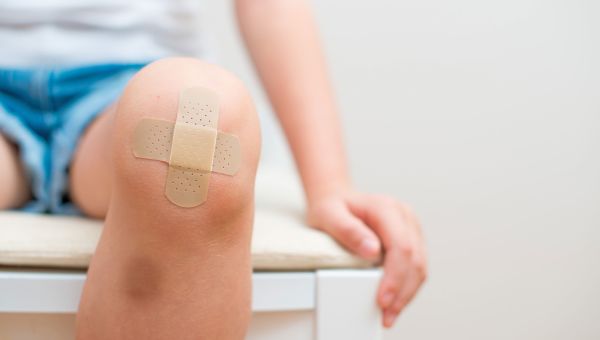
Abrasions
If you’ve ever scraped your knee from falling off your bike, you’ve had an abrasion. These wounds typically happen when your skin scratches or grinds against a tough or rough surface. They skim the top layers of skin and usually don’t cause major bleeding.
As long as you clean and disinfect… Show More
If you’ve ever scraped your knee from falling off your bike, you’ve had an abrasion. These wounds typically happen when your skin scratches or grinds against a tough or rough surface. They skim the top layers of skin and usually don’t cause major bleeding.
As long as you clean and disinfect abrasions as soon as possible, you can reduce your risk of infection. To start, wash your hands, gently rub off any dirt or gravel, and carefully run lukewarm water over the area for a few minutes. Then, to prevent infection, use an antibiotic ointment on the wound and protect the area with a bandage or gauze. Don’t forget to change the bandage once a day, or sooner, especially if it gets wet or dirty.
Deeper abrasions take longer to heal and may cause scarring. If after a few days you have a fever and the scrape doesn’t look like it’s getting better, or has gotten worse, go to an HCP. Be on the alert for any pus, redness, or swelling near the injured spot.
Show Less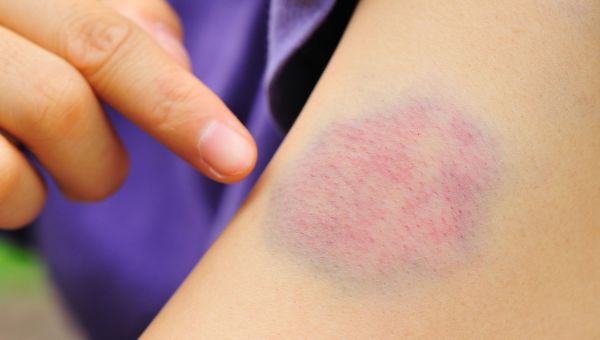
Contusions
Banging your knee on a coffee table or being smacked by a ball has probably left your skin black and blue. The discoloration is the result of blood getting trapped under the surface of your skin. Bruises are common, and for the most part go away on their own.
To help minimize a bruise—or perhaps… Show More
Banging your knee on a coffee table or being smacked by a ball has probably left your skin black and blue. The discoloration is the result of blood getting trapped under the surface of your skin. Bruises are common, and for the most part go away on their own.
To help minimize a bruise—or perhaps help prevent it from forming—first apply a cold compress to the area; you can use an ice pack or wrap ice in a plastic bag. (Place a towel between the ice and your skin.) Keep applying the ice for 15 minutes every one to two hours. Continue icing for at least six hours after you’ve been injured. To reduce any swelling, elevate the injured area so it’s above your heart. Taking an anti-inflammatory OTC like ibuprofen might help, too.
If you find it hard to move the injured area, your joints are swollen, you begin to develop other bruises, or you have unusual bleeding, see an HCP.
Show Less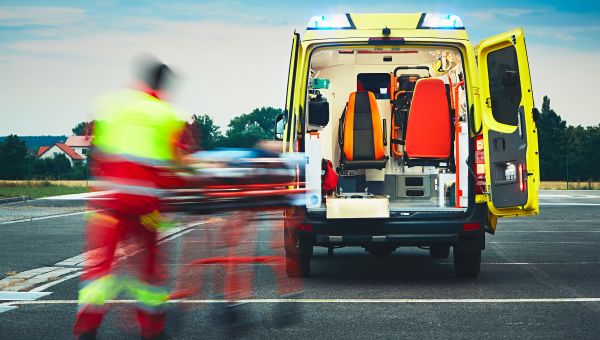
When you should always get help
While some wounds can be treated at home, seek medical attention anytime the following occurs:
- The injury is located across a joint, or near or on your face or mouth.
- The wound exposes tissue underneath the skin.
- Your injury is the result of a bite or a dirty object.
- You're bleeding heavily.
If… Show More
While some wounds can be treated at home, seek medical attention anytime the following occurs:
- The injury is located across a joint, or near or on your face or mouth.
- The wound exposes tissue underneath the skin.
- Your injury is the result of a bite or a dirty object.
- You're bleeding heavily.
If bleeding cannot be controlled or stopped after applying direct pressure and you experience significant blood loss, you should call 911.
If you have severe pain or pain that does not improve after following this advice, see an HCP. Or if you have any doubts or questions about a particular wound, it’s always a safe bet to get it checked out.
Show Less
American Academy of Dermatology Association. How to Treat a First-Degree, Minor Burn. Accessed March 4, 2025.
MedlinePlus. Burns. May 28, 2024.
MedlinePlus. Minor burns – aftercare. September 4, 2024.
MedlinePlus. Laceration versus puncture wound. November 2, 2023.
Mayo Clinic. Puncture wounds: First aid. April 24, 2024.
Shawn Bishop. Mayo Clinic News Network. Wound Location First Thing to Consider when Deciding if Medical Attention is Needed. February 22, 2013.
Stanford Medicine Children’s Health. Lacerations (Cuts) Without Stitches. Accessed March 4, 2025.
Micah Dorfner. Treating skin abrasions known as “raspberries.” Mayo Clinic News Network. May 9, 2017.
Cleveland Clinic. Abrasion (Scrape). June 16, 2023.
MyHealth Alberta (CAN). Scrapes (Abrasions): Care Instructions. July 10, 2023.
MedlinePlus. Bruises. November 14, 2016.
Mayo Clinic. Bruise: First aid. April 17, 2024.
OrthoInfo.com (AAOS). Muscle Contusion (Bruise). December 2024.
Cleveland Clinic. When Does a Cut Need Stitches? August 29, 2023.
KidsHealth (Nemours). When Does a Cut Need Stitches? April 2023.
More On


video

article

slideshow


video


video
